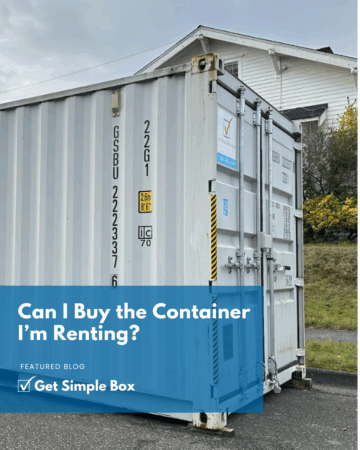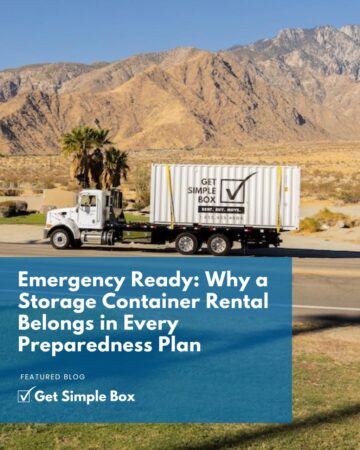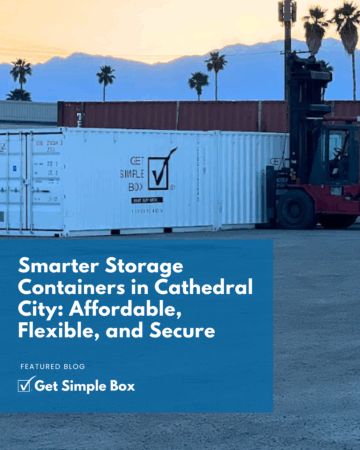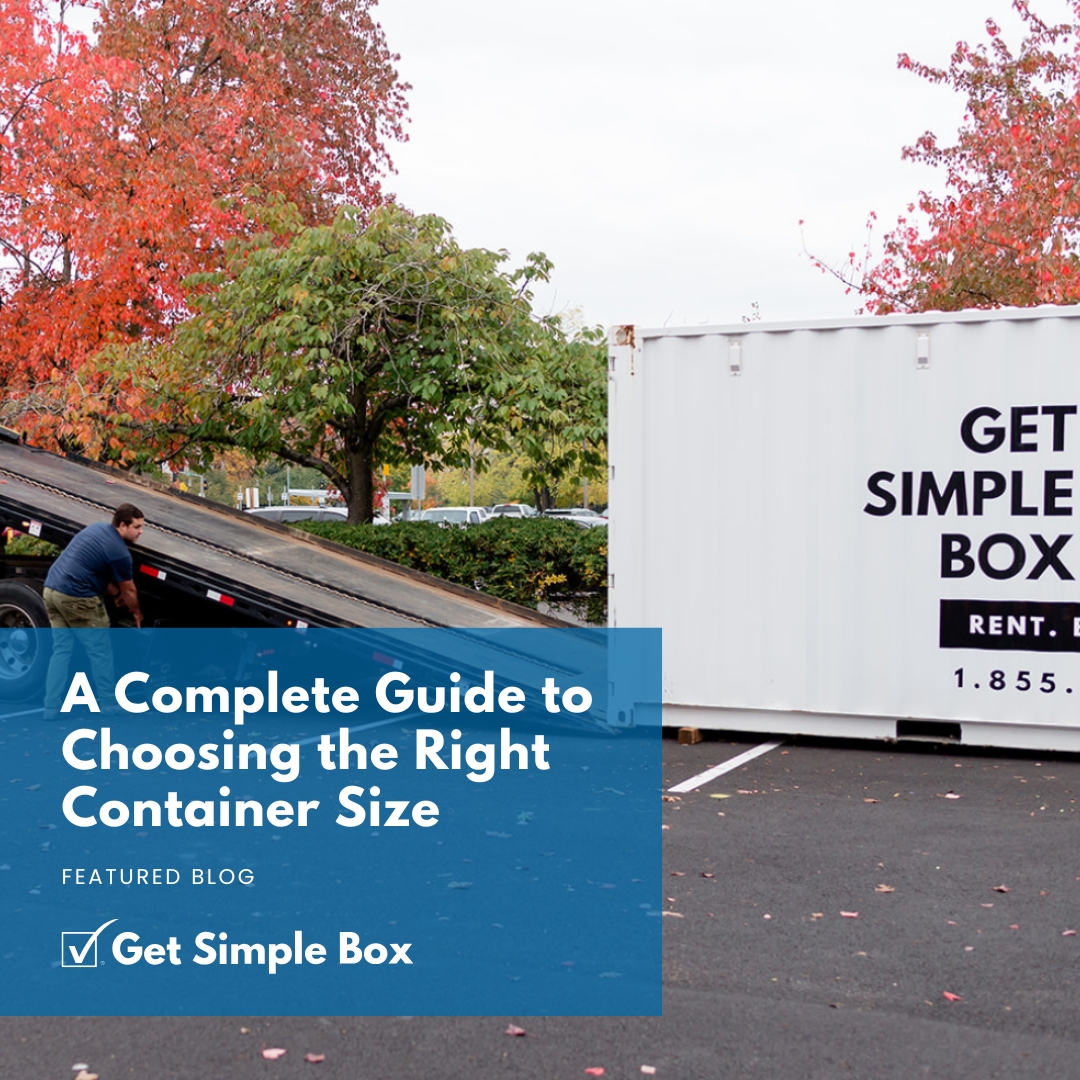
Choosing the right size for a storage container is not just about finding a place to put your stuff. It’s about making smart choices that save you time, money, and hassle. Whether you’re moving, renovating, or just need extra space for your business inventory, picking the right container size is crucial. In this guide, we’ll explore common mistakes to avoid, understand different container sizes, and get practical tips from real-life examples. Let’s dive into how you can make the best choice with the help of Get Simple Box.
Table of Contents
Top 7 Mistakes to Avoid When Choosing a Storage Container Size
When it comes to choosing a storage container, a little knowledge can prevent big problems. Here are the top seven mistakes people often make, and how you can avoid them:
Mistake 1: Not Having Enough Space for Delivery
Many people forget to check if there’s enough room for the truck to deliver their container. Remember, a 20 ft container needs about 70 feet in a straight line, while a 40 ft container requires 120 feet. Not having enough space can cause a lot of headaches and extra costs. Find out if we deliver to your area.
Mistake 2: Ignoring Weight Limits
It’s easy to underestimate how much your belongings weigh. Overloading your container can lead to high fees or the hassle of having to remove items. “Ask yourself, will everything I plan to store weigh too much for the container?,” advises Ross Black, a storage expert with 27 years of experience.
Mistake 3: Choosing the Wrong Size for Moving vs. Stationary Use
Think about whether you’ll move the container or keep it in one place. If it’s moving, make sure it’s not too heavy or too full so it can be transported safely.
Mistake 4: Forgetting to Plan for Access Needs
“If you need to get to the back of your container often, leave an 18-inch walkway down the center,” Ross Black suggests. This simple plan can save you from having to unload everything just to reach one item.
Mistake 5: Underestimating or Overestimating Space Requirements
Choosing too small a container can be as costly as renting one that’s too large. Start with a 20 ft container, as it’s the most versatile and cost-effective for most needs.
Mistake 6: Overlooking Future Needs
Your storage needs might change. Maybe you’ll acquire more things, or you won’t need as much space as you thought. Consider future flexibility when choosing your container size.
Mistake 7: Focusing Only on Cost
The cheapest option isn’t always the best. “Our goal isn’t just to rent a container but to find the right fit so you can focus on what’s important,” says Ross Black from Get Simple Box.
By avoiding these common pitfalls, you can choose the best container size for your needs without any regrets. Let’s move on to understanding the different sizes available and how they can suit your specific needs.
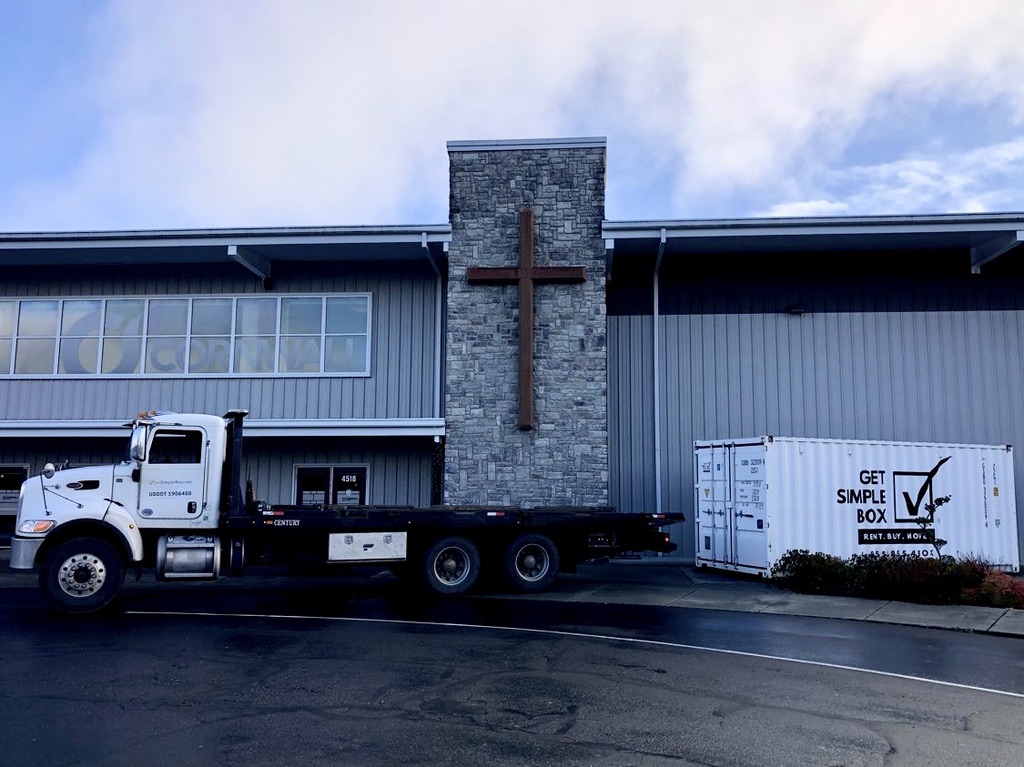
Understanding Container Sizes and Dimensions
When it comes to storage containers, there’s no one-size-fits-all solution. Different projects require different container sizes, and choosing the right one can save you a lot of hassle. Here’s a breakdown of the most common sizes and what they’re best for:
10-Foot Containers
Best for: Small storage needs, such as extra supplies for businesses or personal items.
Real-life example: “Many Dutch Bros. Coffee locations use our 10 ft containers to store extra supplies and inventory. They love this size because it fits perfectly on their smaller properties without taking up too much space,“ says Ross Black.
20-Foot Containers
Best for: Most moving, renovation, and business needs. This size fits the contents of a 2-3 bedroom home and is versatile for many projects.
Why it works: “A 20 ft container is the most common and cost-effective option. If you end up needing more space, we can always deliver another one,“ Ross explains.
40-Foot Containers
Best for: Large inventory storage or long-term use where space isn’t an issue.
Real-life example: Island County Public Works chose 40 ft containers because they wanted room to grow and repurpose them for future projects.
Height Considerations
While most people don’t need the extra height of a high-cube container, Ross notes, “If you’re storing taller equipment or planning to work inside the container, the added height can be a game-changer for ventilation, lighting, and overall comfort.“
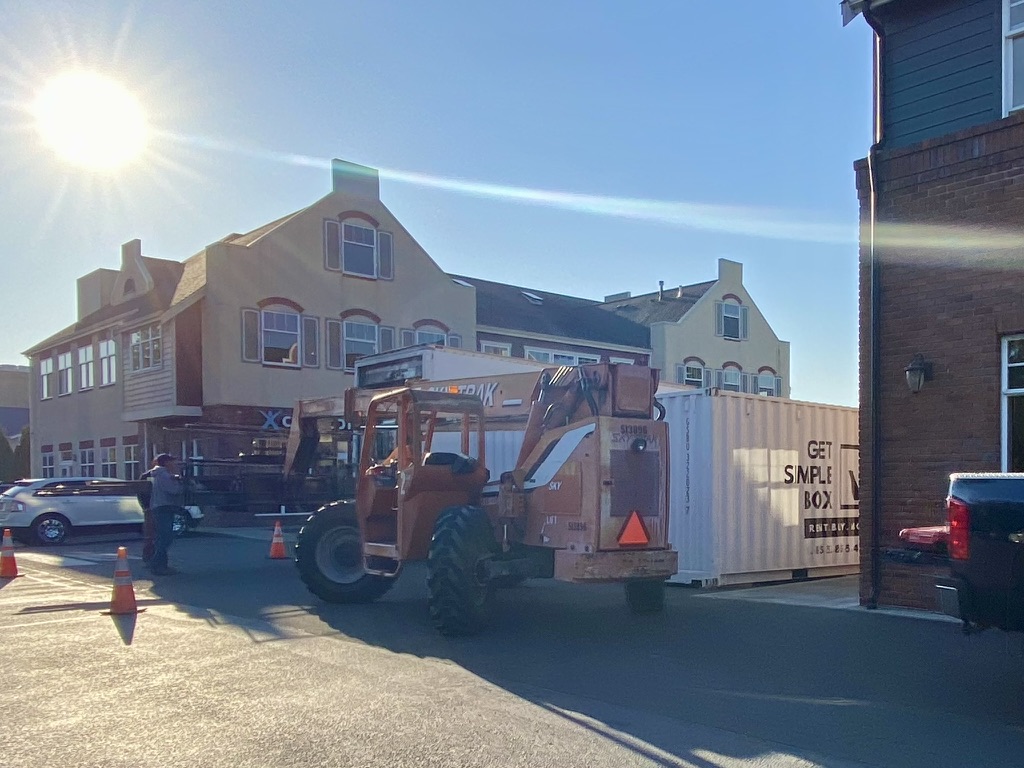
Factors to Consider When Choosing a Storage Container
Choosing the right size isn’t just about what will fit—it’s about planning for how and where you’ll use it. Here are the key factors to keep in mind:
Purpose of the Project
Are you moving, storing seasonal items, or setting up for a long-term project?
Moving: A 20 ft moving container is usually perfect for a 2-3 bedroom home.
Seasonal storage: Industries like landscaping and Christmas lighting often prefer 40 ft containers for inventory, while restaurants and hotels use 20 ft containers for patio furniture or decor.
Access Needs
Ask yourself: Will you need to access items at the back of the container?
If yes: Plan for an 18-inch walkway down the center, which takes up a bit of usable space but makes retrieval much easier.
If no: For one-time moves, skip the walkway and load the container fully.
Site Space
Placement is crucial. For short-term use, Ross recommends placing the container in the driveway or as close to the house as possible. For long-term storage, it’s better to position it along a property line, behind a building, or in a back parking area.
Delivery Tip: Remember, a 20 ft container requires 70 feet of straight space for delivery, and a 40 ft container needs 120 feet.
Weight Considerations
Heavy items like gym equipment, safes, or toolboxes can make a container overweight. “It’s usually cheaper and easier to get a second container than to pay overweight fees or unload and redistribute items,” Ross advises.
By thinking about these factors, you can avoid the frustration of choosing the wrong container and set yourself up for success.
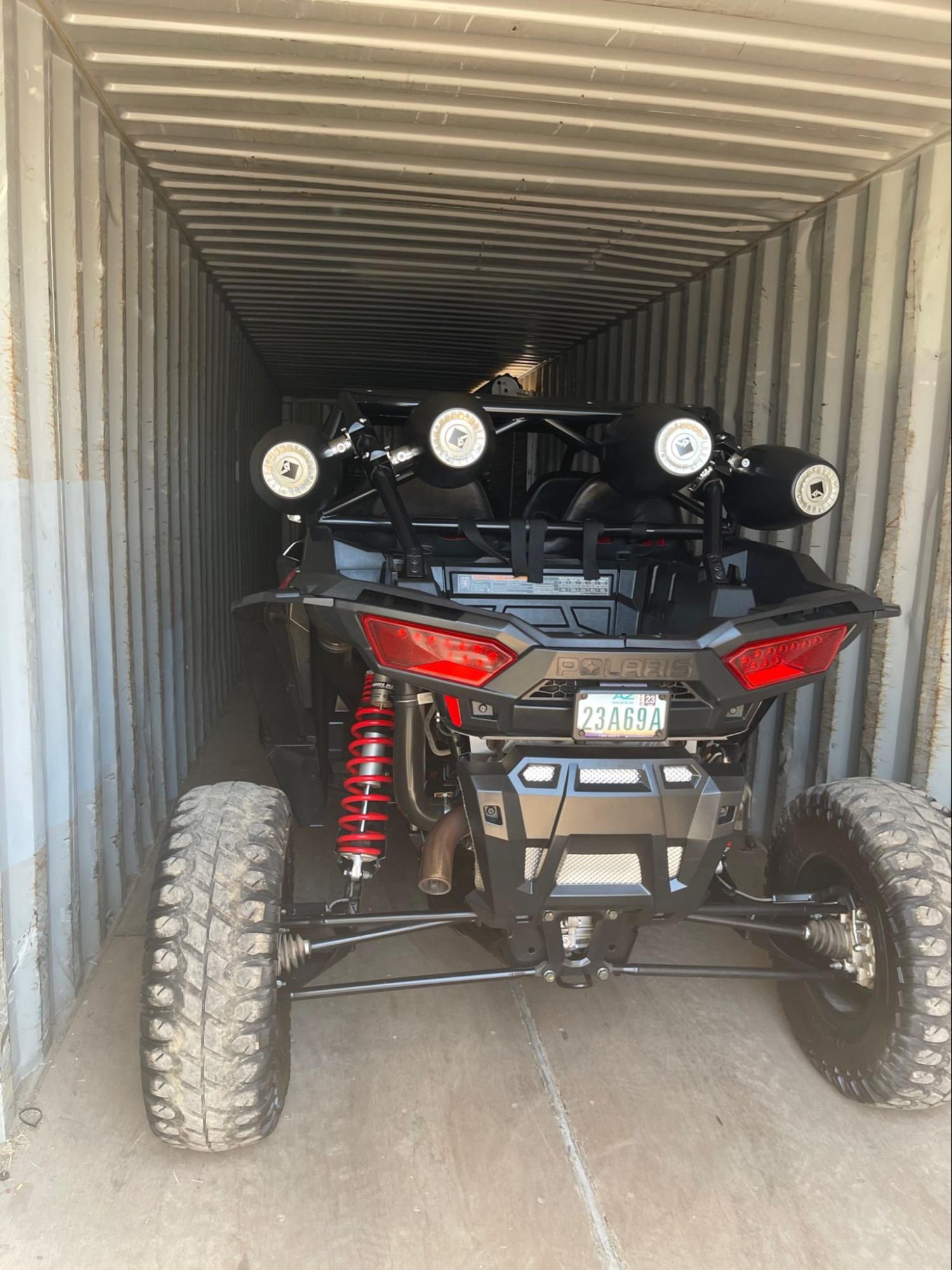
Real-Life Examples of Container Use
Sometimes, the best way to understand which container size is right for you is to see how others have used them. Here are a few real-world examples from Get Simple Box customers:
10-Foot Containers for Small Businesses
Dutch Bros. Coffee, a popular coffee shop franchise, uses 10 ft containers at their locations to store extra supplies like cups and lids. According to Ross Black, “The 10 ft container is ideal for their smaller properties because it provides just the right amount of space without taking up too much room.“
20-Foot Containers for Versatility
Contractors and restoration companies often choose 20 ft containers for their projects. “The 20 ft container is incredibly versatile. It fits on job sites, holds tools and materials securely, and can be delivered exactly where it’s needed,” Ross explains. It’s also the go-to size for most household moves, as it comfortably holds the contents of a 2-3 bedroom home.
40-Foot Containers for Long-Term Storage
Island County Public Works initially considered 20 ft containers but ultimately opted for 40 ft ones. Ross recalls, “They knew they’d be keeping the containers for a long time and wanted to ensure they had room to grow or repurpose them for future projects.“
Seasonal Businesses
Industries like landscaping, Christmas lighting, and tire shops often rely on 40 ft containers to store their inventory during off-seasons. For businesses like restaurants and hotels, 20 ft containers are preferred for seasonal decor and furniture, as they can be tucked away in back parking areas.
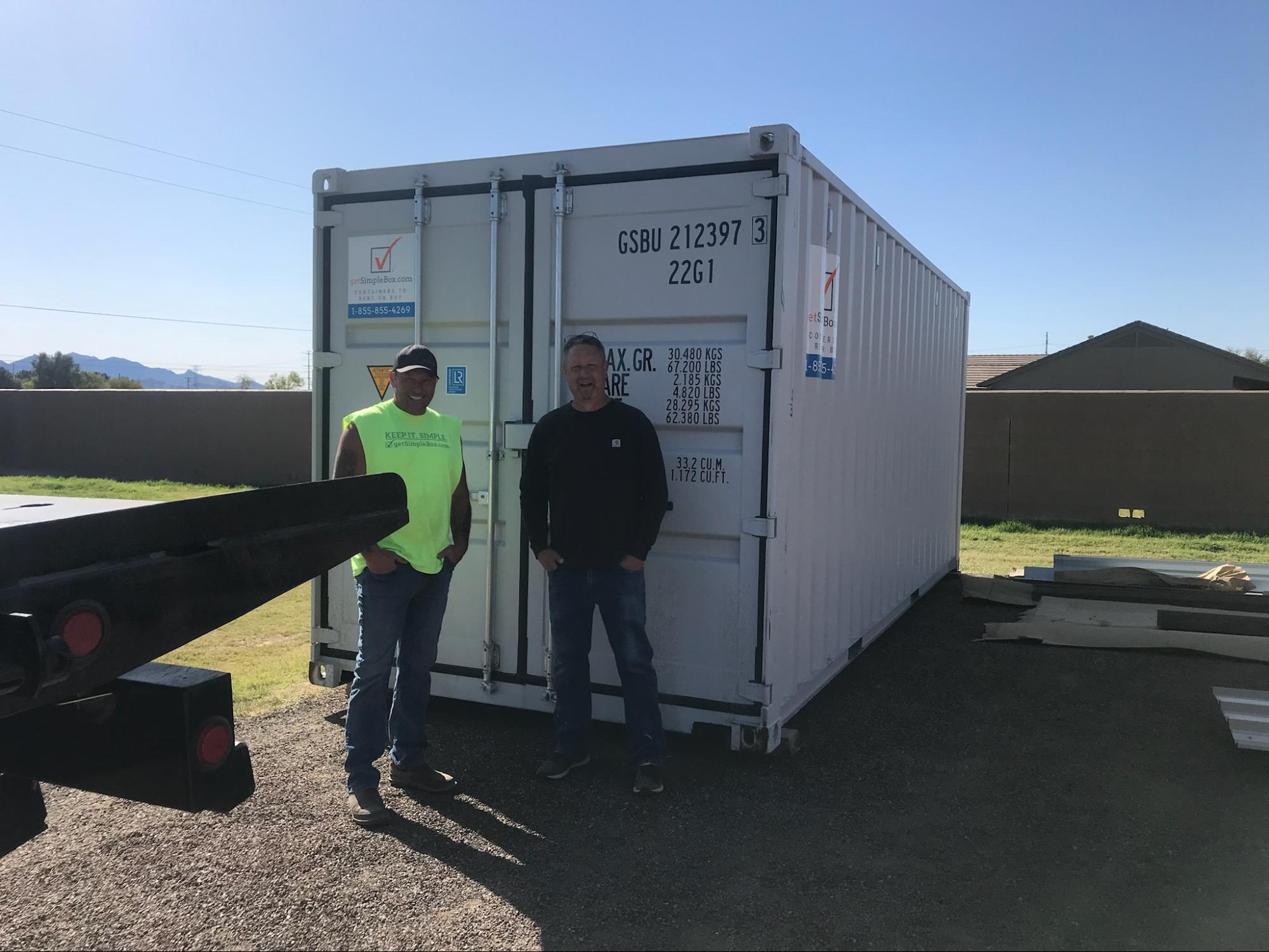
Tips for Making an Informed Decision
Choosing the right storage container size doesn’t have to be overwhelming. With a little planning and the right guidance, you can find the perfect fit for your needs. Here are some expert tips to help you make an informed choice:
1. Start with a 20 ft Container
Ross advises, “The 20 ft container is the most common and versatile size. It’s a great starting point for most projects, and if you end up needing more space, we can easily deliver another one.“
2. Ask the Right Questions
Instead of focusing solely on size, consider your project goals. Ross explains, “We always ask, ‘What kind of project are you working on?’ rather than just ‘What size do you want?’ This helps us recommend the best option for their needs and budget.“
3. Plan for the Future
If you’re using the container for long-term storage, think ahead. Will you need more space later? Would it make sense to get a slightly larger container now to avoid extra delivery costs down the road?
4. Think About Accessibility
For long-term use, plan for an 18-inch walkway down the center to easily access items. If you’re moving and won’t need to access items until unloading, skip the walkway to maximize space.
5. Consult the Experts
The team at Get Simple Box has 27 years of experience helping customers find the right solutions. Ross says, “Our goal isn’t just to rent or sell a container—it’s to help people make good decisions and focus on what matters most.“
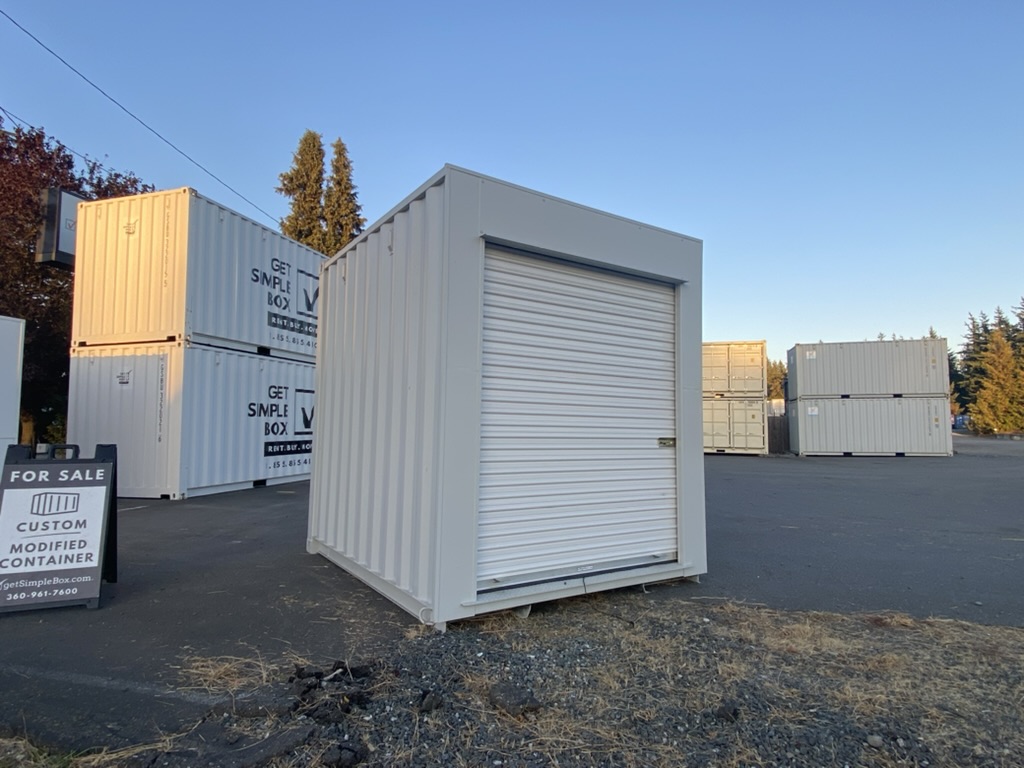
FAQs for Choosing the Right Storage Container
1. Who needs a 20 ft storage container?
A 20 ft storage container is the most versatile size and is perfect for a variety of needs. It’s ideal for moving a 2-3 bedroom home, storing tools and equipment for contractors, or keeping seasonal business inventory. It’s a great starting point for most projects because it offers plenty of space without being too large to move or place.
2. What size storage container is best for moving?
For moving, we recommend starting with a 20 ft container. It’s large enough to fit the contents of a 2-3 bedroom home, including furniture, boxes, and appliances. If you have a larger home, multiple containers can be delivered to meet your needs.
3. Where can I find portable storage container rentals near me, and who can help me decide what size to rent?
At Get Simple Box, we provide portable storage containers for rent in locations across Washington, Oregon, Idaho, and Arizona. Our team has over 27 years of experience helping customers find the perfect solution. We’ll ask questions like, “What kind of project are you working on?” to recommend the best container size for your needs and budget. We also handle delivery directly, so you get expert advice and seamless service.
4. How to choose the right size storage container for my project?
The best way to choose the right size is to consider what you’re storing, how much access you’ll need, and whether the container will stay put or need to be moved. Start with a 20 ft container for most needs, and consult with our experts if you have specific requirements or heavy items.
5. What will fit in a 10 ft storage container?
A 10 ft storage container is perfect for small storage needs. It can hold the contents of a studio apartment or serve as a secure space for extra business supplies. For example, many drive-thru coffee shops use 10 ft containers at their locations to store extra inventory.
6. How much space does a 40 ft container need for delivery?
A 40 ft container requires at least 120 feet of straight-line space for the delivery truck to maneuver safely. If space is limited, a 20 ft container may be a better option, as it only needs 70 feet for delivery.
7. Will a 20 ft container fit my 3-bedroom home?
Yes, a 20 ft container is typically large enough to fit the contents of a 2-3 bedroom home. If you’re moving appliances, outdoor equipment, or have a lot of heavy items, you may want to consider adding a second container to ensure everything fits comfortably.
Container Size Matters
Choosing the right size for a storage container can make all the difference in how smoothly your project goes. By avoiding common mistakes, understanding container dimensions, and considering factors like accessibility, site space, and weight, you can find a solution that fits your needs perfectly. Whether you’re moving, renovating, or storing inventory for your business, there’s a container that’s just right for you.
At Get Simple Box, we believe in helping people focus on what matters most. With over 27 years of experience, we ask the right questions—like, “What kind of project are you working on?”—to ensure you’re getting the best size and options for your goals and budget.
If you’re ready to find the perfect storage container, let our team guide you through the process. Contact Get Simple Box today to reserve your container and get personalized recommendations from our storage experts.
Share this Post:
Related Posts
Container Rental Buyout in Indio, CA Can I Buy the Container I’m Renting in Indio, CA? (Quick Answer) If you’ve
How to Get the Best Deal on a Shipping Container Quick Answer – What Is a Container Rental Buyout? A
Portable Storage Containers in Burlington for Home, Business, or Moving Needs Table of Contents Portable Storage Containers in Burlington, WA
Shipping Containers in Woodburn: Versatile Solutions for Storage and Modifications Table of Contents Smarter Storage Solutions for Woodburn, OR Shipping
Emergency Preparedness Made Easy: The Benefits of a Storage Container Rental A storage container rental is more than extra space,
Reliable Storage Containers in Cathedral City, CA: Secure, Affordable, and Built for You Storage containers in Cathedral City are proving

